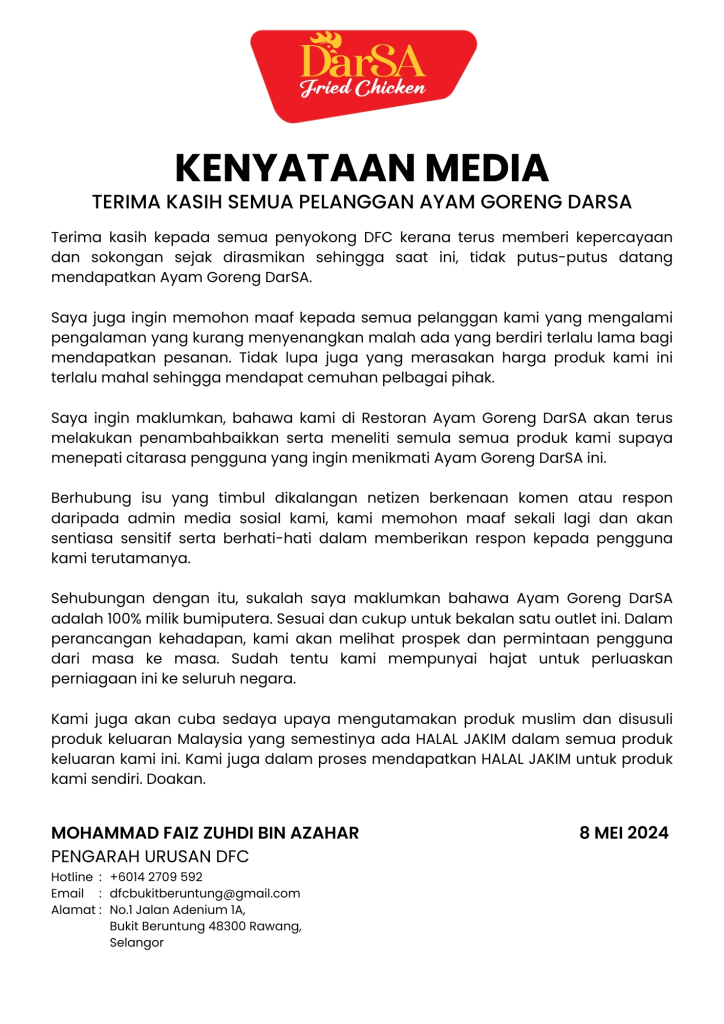5 social media “sins” M’sian brands need to stop doing or risk being cancelled

If you’ve been on the internet lately, you might have seen the term “Type C” trending. And we’re not talking about the USB-C cables or anything of the sort.
For those who are confused, this is referring to a situation with a brand called Darsa Fried Chicken. Based in Rawang, this local fried chicken joint recently found itself facing some controversies and calls for boycotts for supposedly making some racially charged comments. Netizens believe that their use of “Type C” was referring to Chinese individuals.
The brand later apologised for the remark, claiming that it had been a mistake by an employee who was in charge of managing the brand’s Facebook account.
They added that they have since hired someone more experienced to manage their social media.
But of course, the damage has been done, and many netizens are still expressing disappointment over how the brand conducted themselves online.
This incident made us think, what are some lessons that brands could learn in order to avoid the same pitfalls that Darsa Fried Chicken and many other local brands have ended up in?
It’s an important conversation to have, for several reasons:
- Consumers today are much more conscious of cultural sensitivities, and expect the brands they like to align with their beliefs
- The internet has enabled information to flow faster than we can control, so any controversy can easily spread like wildfire even if you didn’t think anyone would care or notice
- The market is saturated with similar brands across different industries, if a consumer thinks a brand doesn’t align with their beliefs, they can easily switch to your competitor
So, we’ve listed five things that brands should not be doing when it comes to their social media marketing strategies.
1. Making discriminatory remarks
This point, of course, is exemplified by Darsa Fried Chicken’s controversy.
Even though they did not explicitly mention any specific communities of people, netizens believe that it’s quite clearly implied that they’re referring to the Chinese community. The brand’s apology never clarified whether the allegations were true or not either.
This goes to show that even if you’re only making implicit statements, once consumers think they’ve sniffed out some discrimination, they’ll be sure to let the whole world know.
So, while the incident ended up drawing a lot of attention to the fried chicken brand, much of it was negative. And no, bad publicity isn’t always a good thing.
Malaysia is a multiracial and multicultural country, so it’s important to keep in mind to treat each other with kindness, if not for our unity, then for your business prospects.
2. Guilt-tripping your customers
Emotional appeal has long been a marketing tactic. Think of all the sad and heartfelt advertisements you’ve watched throughout your life, whether it be for an insurance company or one of Petronas’ tearjerking videos.
However, there comes a point when it stops being emotional appeal, and becomes emotional manipulation instead.
An example where this might have happened was with Jobbie Nut Butter, a Malaysian natural nut butter brand.
In 2020, Jobbie had announced that they would be going bankrupt soon, which in turn garnered support and generated sales for the brand.
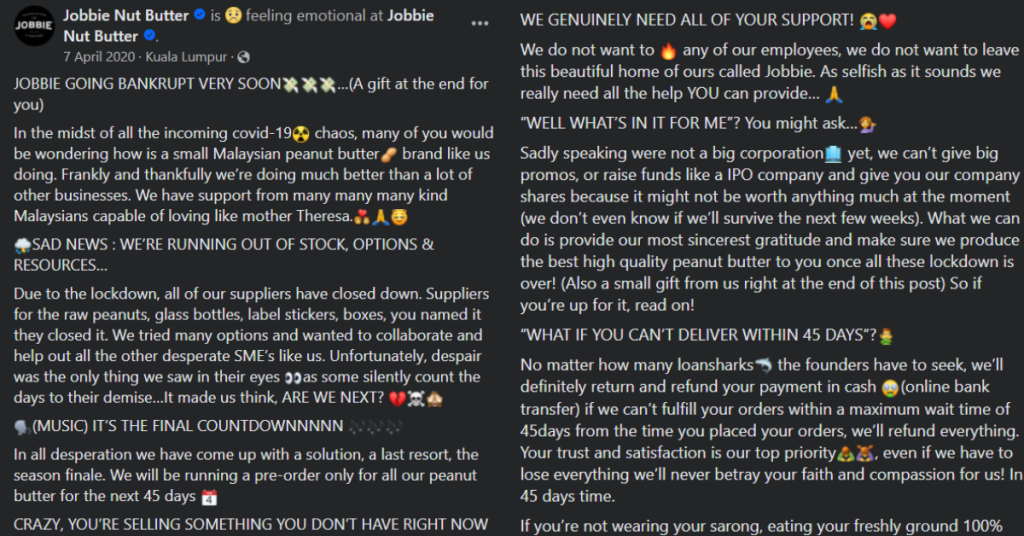
However, Vulcan Post later learnt that they had pulled a similar stunt some years back, and interviewed their CEO to get their side of the story.
While there’s no shame for businesses to admit that they’re struggling, it’s not a good idea to repeatedly capitalise on hardships (especially ones that might be made up) as a way to trick loyal customers into forking over their hard-earned money.
As long as your product is good, it should naturally welcome customers without needing to create or exaggerate a sob story.
This might be a lesson that Jobbie has learnt, as the homegrown company has continued to sustain itself despite their bankruptcy fears years ago.
3. Backtracking on past statements
Remember, everyone, the Internet never forgets.
Chances are, if a business (especially ones with a sizeable presence) has ever made any statements about themselves, that statement would continue to persist somewhere on the interwebs, even if it’s been taken down by the business.
An example of this can be seen with ZUS Coffee when they changed up their explanations of their brand name and logo’s origins.
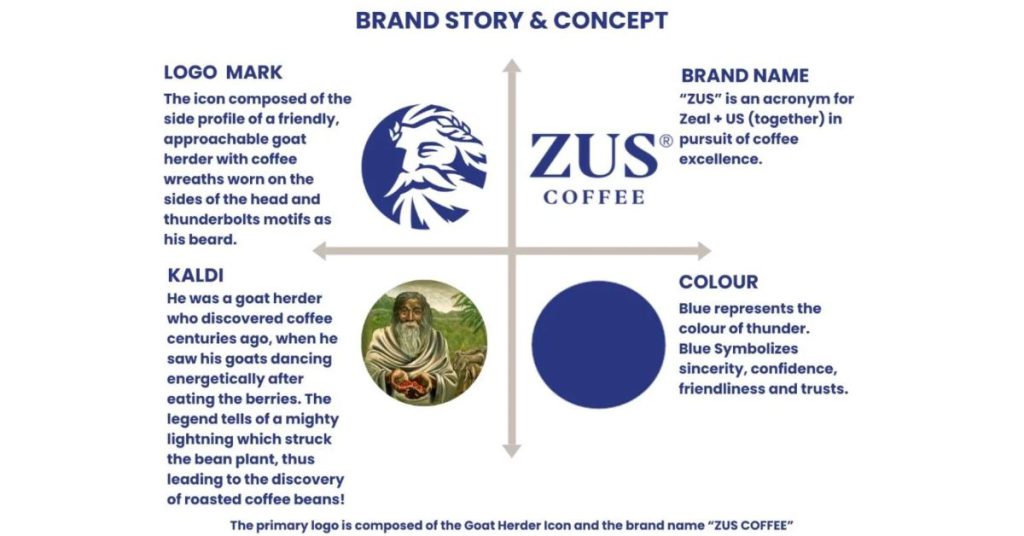
It’s now been established that ZUS Coffee’s logo is a reference to a person named Kaldi’s, rather than Zeus. They also say that the name doesn’t reference him either, but instead is a portmanteau of Zeal and US.
However, there are old screenshots that show how the homegrown coffee chain actually made references to the mythological Greek god.
This makes it seem like their present-day explanations are just backtracking past statements. While not inherently wrong, this behaviour may cultivate a sense of mistrust. Customers might not easily believe the business now that they’ve shown to be wishy-washy about past statements.
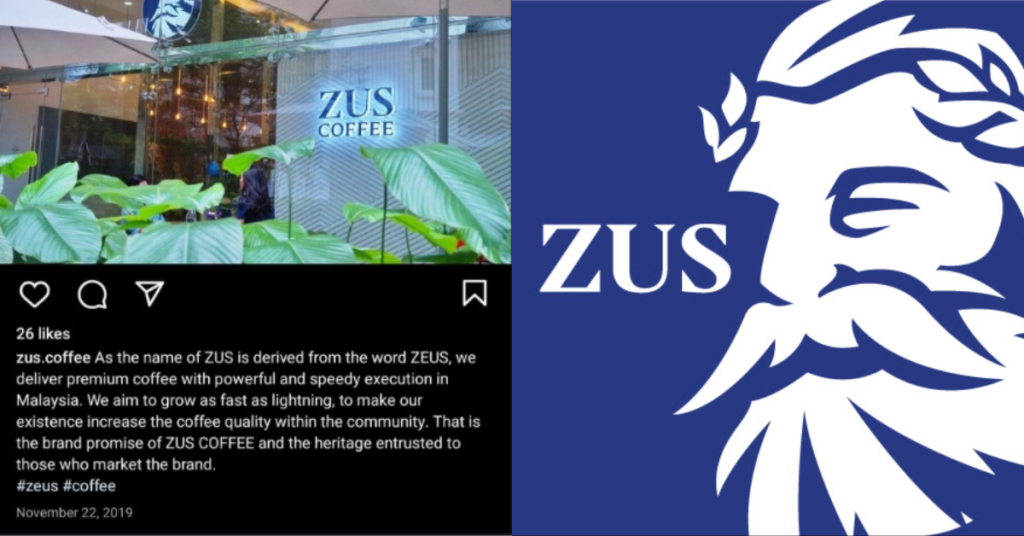
With this in mind, it seems like Malaysian netizens would much prefer transparency and honesty when it comes to matters like this.
4. Pushing out tone-deaf ads
Making tone-deaf statements is bad enough, but using your marketing budget to create whole advertisements that are tone-deaf is much worse as it implies that a whole production was made based on that tone deafness.
A lot of the times, big corporations may fall into the trap of being tone-deaf when trying to be funny or relatable. An example of this would be BIG Pharmacy’s ad that went live just last November. Created for Deepavali, this ad unfortunately contained content that many believed was offensive towards Indians.
The video ended up drawing millions of views on various platforms, which opened up the business to a lot of criticisms.
It goes to show how important it is to have someone who speaks to the culture that you’re celebrating or referencing on the team.
5. Giving half-hearted apologies
Now, it’s inevitable for brands to make mistakes every now and again. When that happens, it’s critical to take accountability and apologise for the mistakes.
And when we say apologies, we mean a genuine one that addresses the situation instead of brushing it off or making vague statements. Even better, it would be great for the business to actually list out the specific actions they will take to rectify the issue.
What we don’t want to see is half-hearted statements that fail to actually apologise for the mistakes made. Worse yet are businesses who decide not to address the issue at all, but instead wait for things to blow over.
With the proliferation of social media and information, netizens value transparency more than ever. They’re also much more aware and educated about current events, and are empowered to speak up and take a stance about these issues.
Going forward, we hope to see Malaysian businesses being more mindful about their social media conduct.
And even if they do make a blunder, they will respond with integrity and accountability.
- Learn more about Darsa Fried Chicken’s controversy that started it all here.
- Read other articles we’ve written about Malaysian startups here.
Also Read: Net zero explained: Why Amazon, Microsoft, & M’sia itself are pledging to be carbon neutral
Featured Image Credit: Darsa Fried Chicken
5 reasons why the new ERP 2.0 OBU is needed in S’pore, and how it can benefit motorists

Netizens in Singapore have expressed discontent with the newly introduced On-Board Unit (OBU) for ERP 2.0, with many questioning the rationale behind the system’s implementation.
We have gathered some key concerns circulating online, along with answers from the Land Transport Authority (LTA) and the Ministry of Transport, to shed light on how the transition to ERP 2.0 will enhance the commuting experience for all motorists.
1. Why is there a need to transit to ERP 2.0 when the current system is working fine?
The current ERP system has been around for twenty-five years since its inception in 1998 and is now nearing the end of its operational lifespan.
Manufacturers are no longer producing the chips and components for the old In-vehicle Units (IU), which calls for an overhaul of the current system.

The new ERP 2.0 system uses the Global Navigation Satellite System (GNSS) technology, which forgoes the need for physical gantries.
It provides the option for distance-based charging in the future, which could allow for a one-off increase in the total number of vehicles while effectively managing congestion and traffic flow on Singapore’s roads.
The transition from the current IU to the OBU, which will enable ERP 2.0, is a large-scale exercise involving many motorists and a diverse range of vehicle models, both old and new.
As the process is expected to be completed in a few years, it must start now to be fully operational when the current ERP system phases out.
2. What’s the difference between the current IU and the new OBU?
The current ERP IU is a simple device that interacts with physical gantries to manage ERP payments and relay information processed by gantries.
On the other hand, the new ERP 2.0 OBU can do everything the current IU does—and more. Much like a mini-computer, it can display ERP-related information, such as charges and card balance, and provide real-time road safety notifications, including proximity to Silver Zones, School Zones, and bus lanes, by leveraging a satellite-based radio navigation system.
More safety notifications, including alerts on speed camera zones, red-light and mobile cameras, will be rolled out down the road.
3. Why can’t the one-piece motorcycle unit be used in vehicles?

The ERP 2.0 OBU has three parts: a processing unit, an antenna, and a touchscreen display. The exception is for motorcycles, which will be equipped with single-piece OBUs—but why so?
With its enhanced capabilities, the OBU has a larger computational power, which means the device will emit considerable amounts of heat, just like a laptop would.
When a single-piece OBU is placed in enclosed vehicles, the processing unit could potentially overheat in Singapore’s climate. Integrating a cooling fan into the unit would only make the single-piece OBU bulkier, obstructing the view of drivers.
Think about the physics of it: cars and commercial vehicles are like greenhouses as they are enclosed environments with glass. The interior of a car will be much warmer when compared to motorcycles—in fact, the dashboard of a car can go as high as 50 to 52 degrees Celsius.
On the other hand, motorcycles often maintain a relatively stable temperature, even on hot, sunny days. If the ambient temperature hovers around 35 degrees Celsius, it typically remains consistent as it does not trap heat like enclosed spaces.
As such, the OBU is split into three separate units to accommodate cars and commercial vehicles, with the processing unit mounted away from the dashboard.
4. Is it safe to use the new OBU?
Acknowledging some motorists’ concerns about the touchscreen display obstructing their view while driving, they have options whether to install the screen and if so, the mechanics will install them such that the screen can be folded down if preferred.
Those who opt not to install the display screen can access information through the ERP 2.0 mobile application.
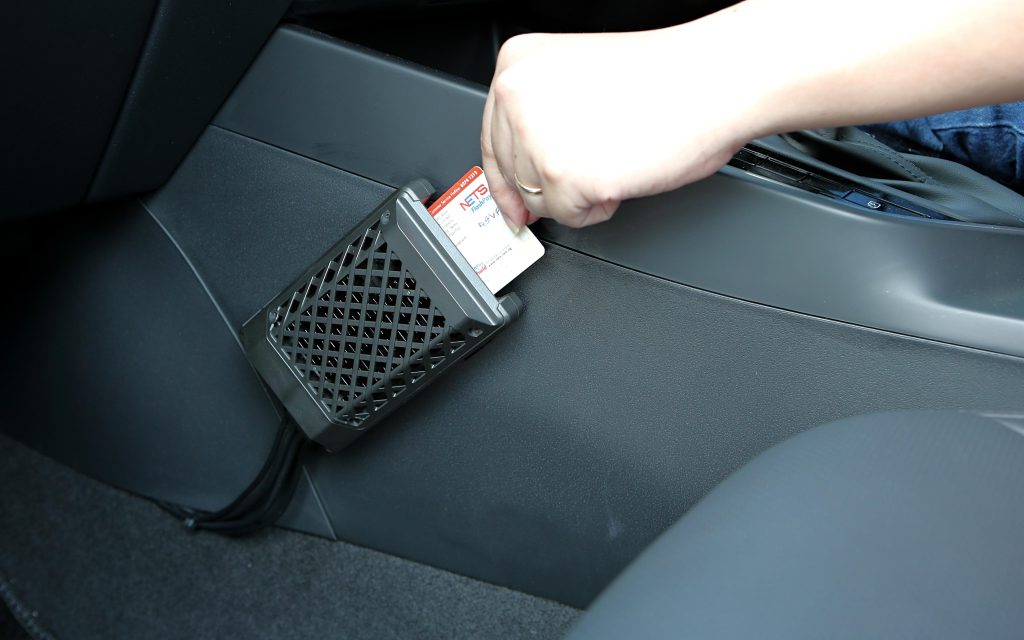
Motorists have also raised concerns about having to bend down to access their CEPAS cards. However, LTA has clarified that the OBU eliminates the need for motorists to remove their CEPAS cards from the processing unit while driving.
They can also choose their preferred placement of the processing unit, subject to the feasibility of their vehicle’s make, model, and condition.
Once drivers start their vehicles, the CEPAS card balance will be displayed, which reminds them to top up their cards before approaching the gantry. While they can also opt for auto top-up to replenish their card balance seamlessly, they can still manually reload their card after parking their vehicle even without signing up.
Today, all public and many privately owned car parks use the Electronic Parking System (EPS), which does not require motorists to tap their cards at car park terminal stations.
For privately owned car parks that are not EPS enabled, NETS is providing all motorists who install the OBU with a complimentary One Motoring Card as a substitute.
In cases when a complimentary parking ticket is available, drivers can simply press the on/off button on their touchscreen displays to deactivate the card within the OBU. If the motorist forgets to reactivate the card after exiting the car park, the correct amount will still be deducted from the card balance once he passes through the next active ERP gantry.
5. Why can’t we replace the OBU device with a smartphone?
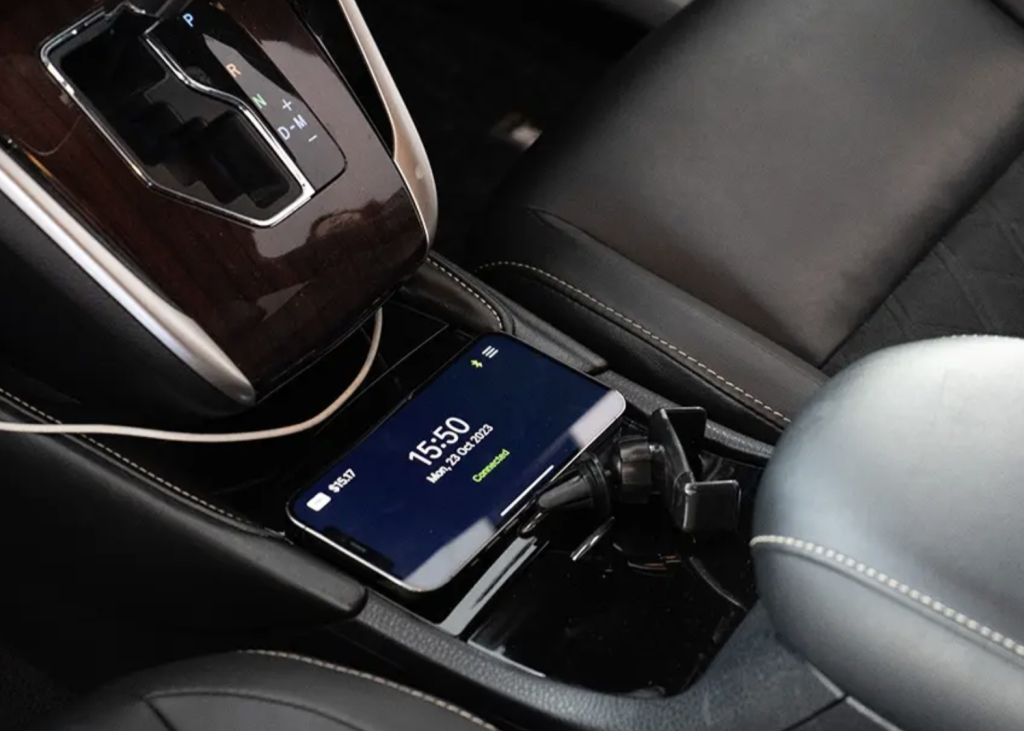
According to LTA, the ERP 2.0 OBU is designed to provide high levels of security and safety, which other systems may fall short.
Take a smartphone-based system, for instance. With different smartphone models running on different operating systems and features, ensuring the security and reliability of such systems can be a challenge.
A smartphone-based system is a two-way transmission system, which exposes it to tampering threats and cybersecurity risks. The OBU, on the other hand, transmits information one way from the device to LTA’s systems.
In addition, utilising a smartphone for ERP presents challenges due to its portable nature. Unlike the OBU, which is securely affixed to the vehicle, smartphones are carried around and may not be turned on or run out of battery while driving, which affects the accuracy of the vehicle location data.
As the OBU can pick up precise location data, it minimises the risk of erroneous charges and ensures that ERP transactions can be made steadily across different environments and vehicles.
Featured Image Credit: Land Transport Authority
Also Read: EVs outpace petrol vehicle registrations in S’pore for the first time – BYD claims top spot
“Mushrooms scare S’poreans”, so he turns them into funky, functional art to fight those fears
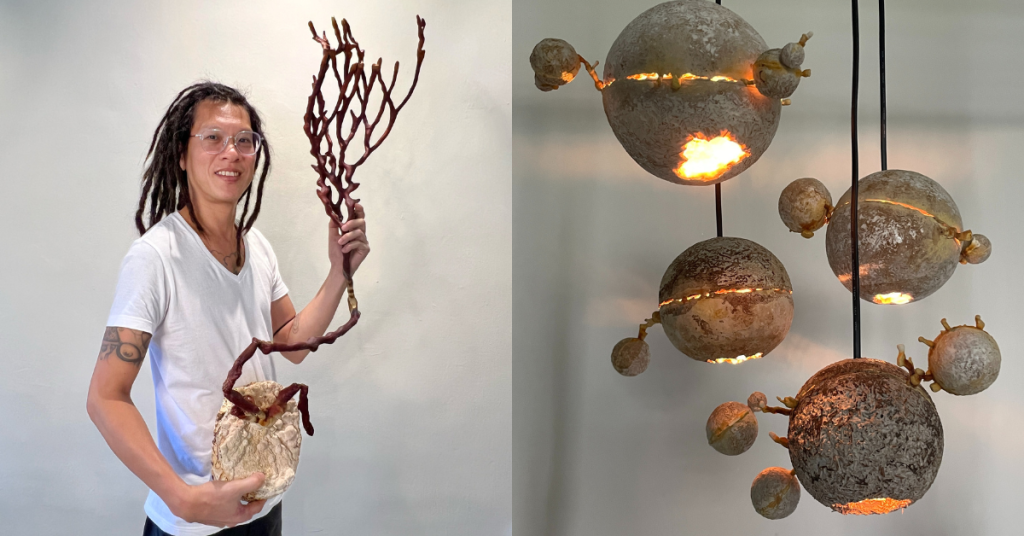
“In all their expressions, [they] have helped me to develop myself, becoming a more balanced being,” Ng Sze Kiat, the founder of Bewilder, told us.
It’s a sweet sentiment that you might attribute to a friend, a family member, or even a loving pet. None of them apply in this case. Instead, Sze Kiat was referring to fungi.
While an odd statement to make, it came from a place of passion and deep understanding of his craft. You see, over a decade ago, he taught himself to grow mushrooms through liquid cultures while living in Istanbul.
But when he tried replicating it upon returning to Singapore, it was failure after failure. The right materials were hard to source and he couldn’t turn to local mycology experts for help because, well, there weren’t any.
Determined, Sze Kiat stuck with his fungi experiments and learnt everything he needed to know about it. Or rather, everything he could at the time. “Working with fungi means that nothing is to be expected, and thus there can be no paths to follow,” he said.

Mushrooms are bewildering in his opinion. They can feed, heal, clothe, and house you, but they can also kill you. There’s a push-pull element with mushrooms that draws him to these enigmatic organisms.
“They scare people, especially in Singapore. Mushrooms refuse to be categorised and placed into neat little boxes,” Sze Kiat stated. It’s for this very reason that he founded Bewilder in 2019, a one-stop Mycological Design Studio.
Spreading the spores in different ways
Bewilder initially started as a studio offering grow kits, fungariums, educational workshops, and fungi art pieces. Each of these was put forward to help “spread the spores”, so to speak.
Then Sze Kiat quickly saw that there was an opportunity in the culinary segment. Despite mushrooms being a pantry staple in many Singaporean kitchens, a bulk of the gourmet mushroom species used aren’t available here.

This includes huge Lion’s Mane, Yanagi-matsutake, Chestnut mushrooms, and many others. So he began growing and supplying these gourmet mushrooms to restaurants.
They’re on a grow-to-order model to ensure that chefs get the freshest mushrooms and reduce unnecessary wastage on Bewilder’s end.
Following that, the brand later expanded into the sales of cultures and consultation work for research institutions. This came about very organically due to Sze Kiat’s background and the fact that they’re pioneers in the field.
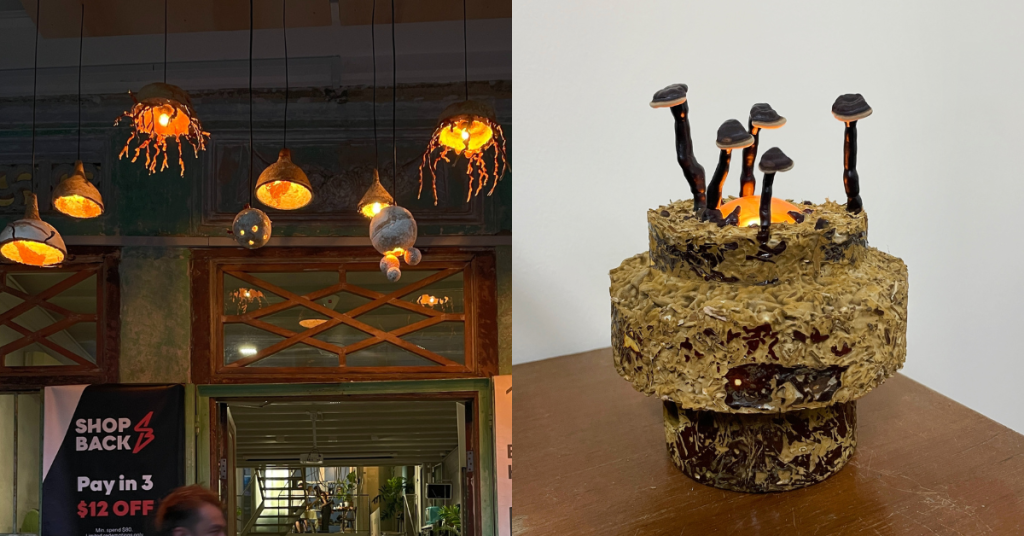
“As a self-taught mycologist, my years of hands-on experience coupled with my unorthodox approaches translate into solutions that are of value in academia,” he shared.
Besides education, one of his main interests is in medicinal mushrooms and this shows in Bewilder’s offerings as well. The studio carries a large array of them such as Lingzhi and Cordyceps. He’s also looking to provide a full suite of medicinal mushroom related products and services in the near future.
It’s a labour of love
But if you’re not into any of these, perhaps Bewilder’s fungal bouquet might be more up your alley. There’s a good range to choose from, like wedding bouquets crafted from various Lingzhi to edible ones like their “Bloom of Love” bouquet. The price for these starts from S$88.
The latter is their new special for Mother’s Day featuring colourful mushrooms. Don’t worry, Sze Kiat assured us that they’re indeed safe to consume. In fact, Bewilder’s farms undergo stringent inspections and have received certification from Singapore’s Food Safety agencies.
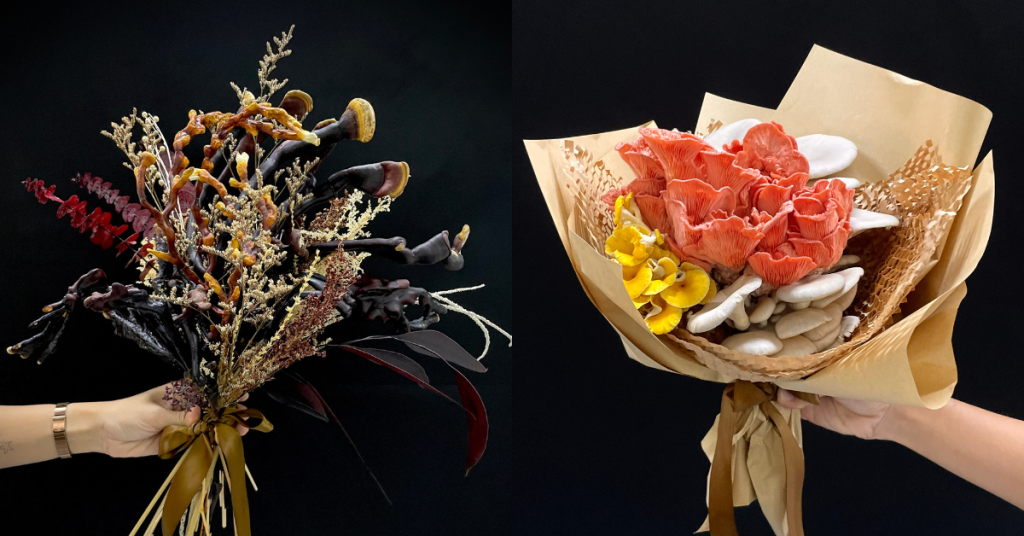
To create the bouquets, customers get to choose the colour palette and themes they like before the studio begins sketching designs for it. Afterwards, Bewilder will select the species and mushroom strains to grow the bouquets from scratch.
It’s a laborious effort as mushroom cultivation typically goes through six stages:
- Reviving the mother cultures – Bewilder grows the original fungal cultures they’ve stored to make sure they’re healthy and ready for the next step.
- Liquid fermentation – Bewilder takes the healthy fungal cultures and grows them in liquid form to produce a lot of fungal material quickly.
- Solid state fermentation – Bewilder sterilises grains and adds the liquid fungal culture to them, allowing the grains to ferment into what’s called “grain spawn”.
- Substrate – Bewilder makes their own substrate bags before adding the grain spawn to start the growth process.
- Incubation – The substrate bags are put into rooms in controlled temperatures to allow the fungus to spread. This can take up to a month depending on the type of mushroom species.
- Fructification – Once the bags are completely filled with fungus, they’re moved to special chambers with the perfect conditions for mushrooms to grow.
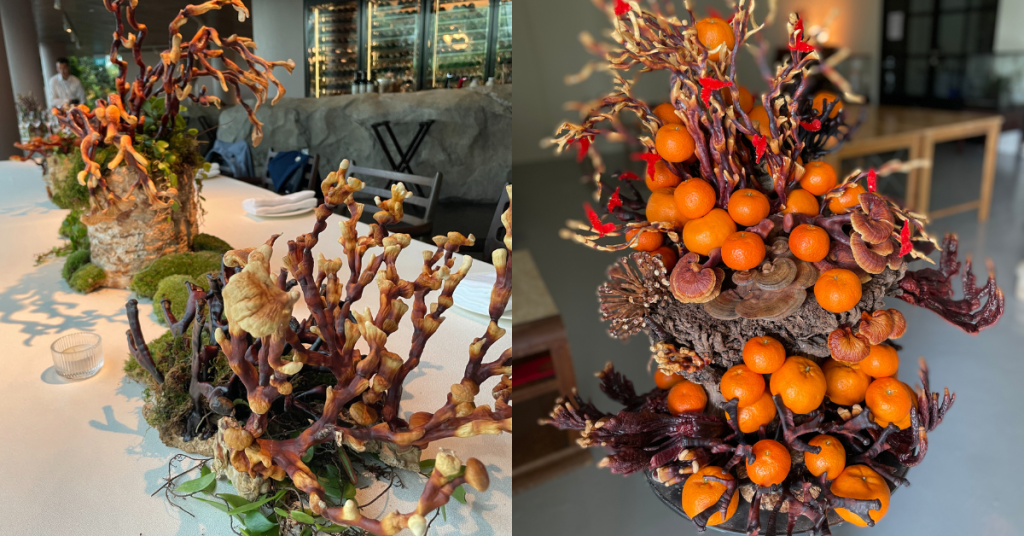
In all stages, Sze Kiat shared that contamination is one of the most challenging problems. Proper aseptic techniques need to be practised in order to ensure biodiversity.
That said, he advised customers to handle the bouquets gently as some can be delicate. The studio’s “Bloom of Love” edible bouquet can last up to one week when kept refrigerated.
Each bouquet is bespoke and currently sold for a limited time only. However, with the many requests outside of Mother’s Day, Bewilder is considering adding it to its product repertoire.
“The key is to adapt to the ebb and flow”
At the moment, Bewilder operates out of Bukit Merah Central in a 3,500 sq ft facility with a team of five, including Sze Kiat. The founder remains very active in the studio’s day-to-day activities.
Its retail doors are set to open to the public next year, but for now customers can shop online via its website.
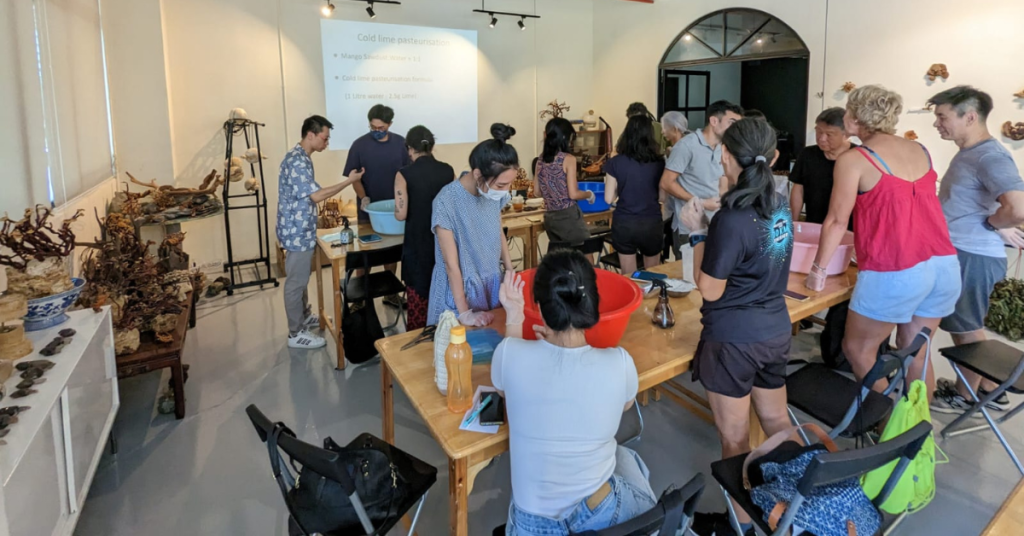
Its most popular offering so far has been the monthly Low Tech Mushroom Cultivation Workshop (S$128). Participants learn to grow their own edible mushrooms at home without the use of lab equipment.
Speaking openly, Sze Kiat shared that profitability isn’t Bewilder’s success metric, but he’s also realistic in understanding how essential it is to the business.
“We strive to be more climate-positive and sustainable in our practices, and this often translates to higher costs from a monetary perspective. But at what cost, right? Sustainability, circularity, purpose, and a dash of daring are key for Bewilder. The secret is balance,” he stated.
In that light, the studio is modelled after the way mushrooms grow.
”As much as goals help give one a general direction be it business or any other aspect in life, the key is to adapt to the ebb and flow of the business landscape, like how we all do in life. Mushrooms adapt to environs, so too must we.”
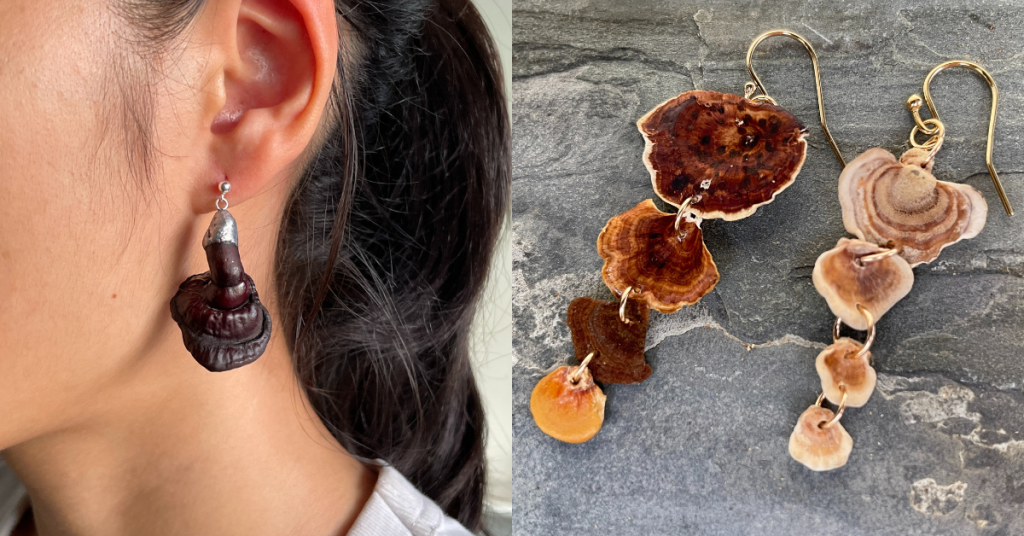
Also Read: Airbot’s new self-cleaning robot vacuum boasts 3 promising features, we test each one out
Featured Image Credit: Bewilder
What’s stopping female entrepreneurs from becoming leaders? 5 M’sian female leaders share.
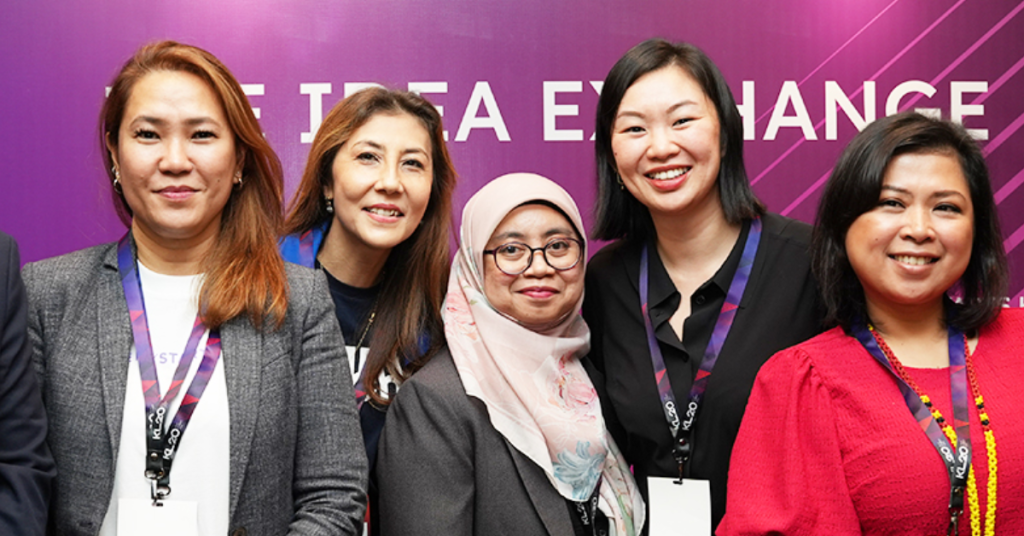
While many eyes were on KL20 Summit’s main Leader and Founder stages, there was also something called the Catalyst Corner where a variety of different side events were being held.
One such event was called “Catalyst for Change: She Runs the World”. Organised by Cradle Fund and Women in Tech as a roundtable discussion, it was meant to foster discussions around female empowerment and entrepreneurship.
And before you complain about whether such a panel is still needed, here are some fast facts.
The 2023 World Economic Forum’s Global Gender Gap Report had ranked Malaysia as 102nd out of 146 countries, and showed that we were far behind compared to our neighbours when it comes to gender equality.
So yes, there are still many conversations that need to be had about the state of our gender equality.
The panel comprised of:
- Yuki Aizawa, the APAC Director for Women in Tech
- Juliana Jan, the Senior Vice President in Grant & Investment for Cradle
- Viviantie Sarjuni, the CEO of SCENIC
- Shermaine Wong, Cult Creative’s co-founder and CEO
- Norilmi Amilia Ismail, SpaceIn’s CEO
The conversation was moderated by Tunku Danny Mudzaffar, the founder and CEO of microLEAP, a company that helps micro-enterprises secure investments and democratise investing.

Something particularly memorable to me was that towards the end of the session, there had been a well-intentioned question thrown out to the panellists.
The participant started by saying that he’s worked with women all his life, so he wondered what’s stopping women from running the world.
“Is it mentality? Is it really discrimination?” he wondered.
It was quite the poignant question, one that all the panellists were inadvertently answering throughout the talk—or perhaps, even, throughout their whole careers.
His question is one that was echoed by Cradle Fund’s Juliana Jan, who shared earlier on in the session that from a funder’s point of view, the issue didn’t lie in discrimination, but rather, the fact that there are simply too few women applying for funds.
So, why aren’t more women participating?
It’s a leaky pipe
A quick answer to that question can be found in the manifesto of Women in Tech, which is “From the Classroom to the Boardroom”.
Essentially, yes, there is a pipeline from the classroom to the boardroom. But it’s one with lots of holes that require fixing.
The drop-off from education to the workplace is like a chicken and egg problem. Yuki pointed out that there is a lack of role models for young women especially in STEM, which then leads to less women wanting to join those sectors.
That’s one reason why having events such as these are important—to increase the visibility of ladies leading their fields.
But more than just seeing female leaders, it’s important to have clear and visible pathways to everyday jobs. In other words, there’s a need for “everyday champions” to be highlighted.
It’s not always a meritocracy (biases)
Arguably, an ideal society would be one that is merit-based, that fairly assesses talents instead of gender.
For one, that’s what Juliana said Cradle aims to do.
Unfortunately, men may often underestimate women’s capabilities. They may not be fairly judged for a myriad of reasons.
At the same time, some women underestimate their own capabilities and performance. You might think of this as the impostor syndrome or the confidence gap, which goes back to the first point.
“It’s happened to me,” Norilmi from SpaceIn said.

Double-hatting as a lecturer, many tend to assume that she doesn’t know anything about business. Of course, that presumption typically backfires when Norilmi shows that she does have business savviness as a domain expert.
She said that it’s important to grow the resilience to overcome these assumptions that you may face in the industry, and recognise that it might not be a fair assessment of your real capabilities.
Activism overlooks intersectionality
When it came SCENIC CEO Viviantie’s turn to speak, she was asked, “With Sabah having the highest rural population in Malaysia, do you see inherent biases or societal exploitations?”
“All the time,” she answered.
SCENIC, for those who may not know, is the Sabah Creative Economy and Innovation Centre.
Viviantie who is a Sabahan herself shared that she often hears many underhanded comments such as “for a Sabahan, you are quite smart”.
“We’re made to believe we’re not good enough,” she shared. She brought up an incident she experienced at a social enterprise, where a woman had to drop out. She said she couldn’t continue her journey with them because her husband wouldn’t allow her.
These issues are commonplace in rural areas where opportunities are scarce and support even scarcer.
Overlooking the woes that women in rural areas face hurts women overall, which is why it’s crucial not to leave them out of the conversation.
Women shoulder many responsibilities and societal expectations
It’s not just in rural areas that this is happening, of course.
There are many cultural expectations that modern women face still, such as the expectation to defer to men as well and always put the family first.
Norilmi’s solution to this was by finding and forming communities of women who can support one another.
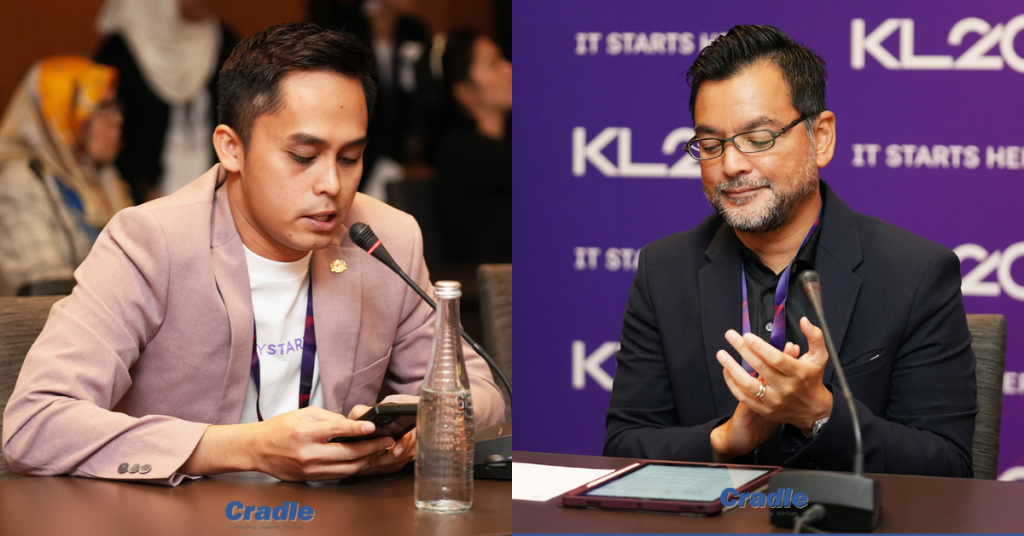
However, especially for mothers, it can be difficult to network with others on top of caring for their children. Many sacrifices would have to be made.
“Time is very limited,” Shermaine of Cult Creative had said at one point. “It goes back to having support. Supportive partners, co-founders, and work environment.”
And of course, there needs to be a supportive ecosystem overall. The ecosystem should be developed in a way where mentorship and community are easily accessible. That way, we’ll start seeing more submissions and applications from women overall.
You’ve got to virtue signal
At the end of the day, intentionality is key.
Sure, it might seem counter-intuitive to have to mandate a quota for women’s participation. It might feel like pigeonholing women entrepreneurs when there is a female panel at every conference.
But until this practice becomes so ingrained into society that it’s a norm, these efforts will be necessary.
As Yuki said, whether we like it or not, we must be intentional about have female representation. In that same way, the boardroom must be intentional about hiring women. Platforms must be intentional about welcoming women to submit their applications.
In other words, in order for women to be running the world, we must be intentional about it. With that, the rest will follow.
- Read other articles we’ve written about KL20 Summit 2024 here.
Also Read: How financial institutions & universities are reshaping their network through AI-native solutions
Featured Image Credit: Cradle Fund
Fake honey is a huge problem, this M’sian biz addresses it with its farm-to-bottle approach
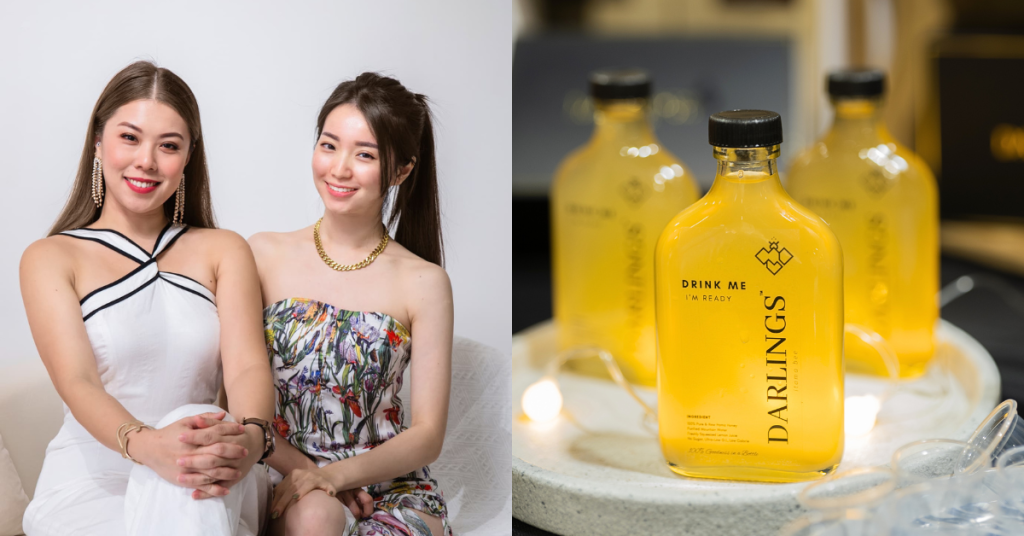
“Darlings Honey was born out of an unfortunate incident. Right before the pandemic hit, a family member was diagnosed with cancer,” Danielle and Lewin Pee recalled.
“At the time, we were debating on treatment options and were keen to explore more natural alternatives. Several of our friends had recommended consuming stingless bee honey (or better known locally as kelulut honey).”
It’s easy to brush the recommendation off as an old wives tale, but scientific studies have shown that kelulut honey has various health benefits. For example, it has better antioxidant capacity and anti-inflammatory effects compared to other kinds of honey.
Believing that these benefits could help cancer patients, Danielle and Lewin were more than eager to give it a try.
But the issue was that most honey products on the market had unnecessary added ingredients like sugars. In fact, The Straits Times reported that Dr Zulkifli Mustafa, a senior lecturer at Universiti Sains Malaysia (USM), found 90% of honey products sold in Malaysia were fake.
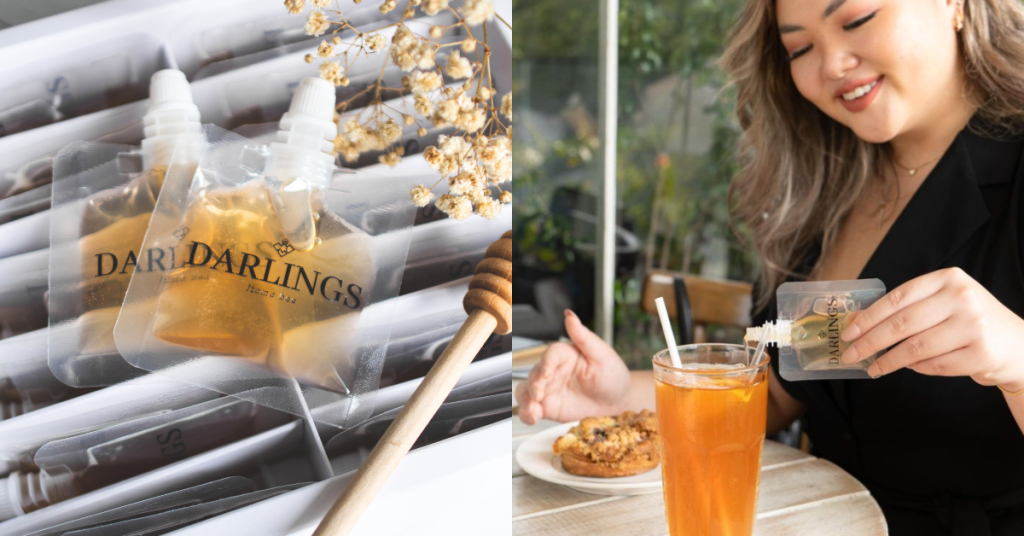
It’s a staggering number considering that many locals purchase honey from store shelves for a healthier lifestyle.
Having done their research and realising that not many people knew of kelulut honey’s benefits, the sisters decided to launch a brand highlighting the local gem. Thus, marking the beginning of their family business.
From the forests of Johor to the Klang Valley
Darlings Honey lives by a “Forest to Bottle” concept, where each bottle contains only raw and pure harvests from their stingless bee farm in Kota Tinggi, Johor. “As such, it’s organic and the bees are free to gather nectar from wildflowers and the multitude of fruits available in the forest,” they explained.
So don’t be surprised when you notice that no two bottles are the same colour or taste. These factors heavily depend on the season and vary according to the types of fruits and flowers the bees gather nectar from.
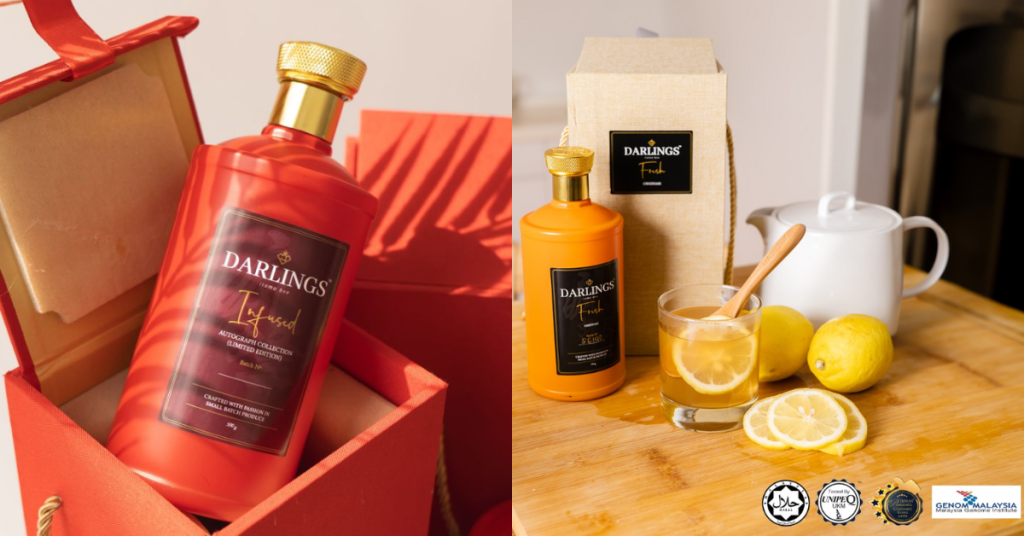
It’s also reported that wild honey is also cloudier and can crystallise easily, which doesn’t always look as appealing. But where it lacks in aesthetics, it makes up for in health benefits.
The siblings work with local villagers who help take care of the bees and harvest the honey from tree trunks. This partnership serves as their way of supporting the local economy while also ensuring that the kelulut honey is of premium quality.
Elaborating on this, Danielle and Lewin explained that they avoid commercial methods of obtaining honey. The brand doesn’t transplant bees into man-made boxes for the sake of mass production. The pair shared that doing so allows them to get more nutritious and concentrated honey.

To assure customers that they’re getting authentic kelulut honey, each batch of products undergoes testing by the Malaysia Genome Institute (MGI). This is because they’ve noticed that there are some sellers of kelulut honey who either don’t have certification, or only send their honey for testing when the business first opens.
“In fact, some brands might produce one batch of pure honey just for testing, while the subsequent batches are fake honey or have added sugars mixed in,” the siblings shared.
Keeping the supply small for sustainability

One other way customers can authenticate Darlings Honey’s products is from their inventory size. According to Danielle and Lewin, stingless bee hives can only be harvested two times a year.
This seems to be supported by Dr Zulkifli Mustafa as well, who told The Star that stingless bees can produce an average of 3kg of honey per colony each year. For context, it’s on the lower end of the spectrum as some bee species can usually produce up to 27kg or more per colony.
As such, Darlings Honey only harvests in small, exclusive batches to avoid overharvesting. “If we want to increase our supply in the future, we will need to cultivate more hives,” they said.
It takes approximately two months to harvest enough honey from a hive for a single 500ml bottle of Darlings Honey. Part of its Drink Series, customers can drink the honey on its own or use it to marinate meats and salads.
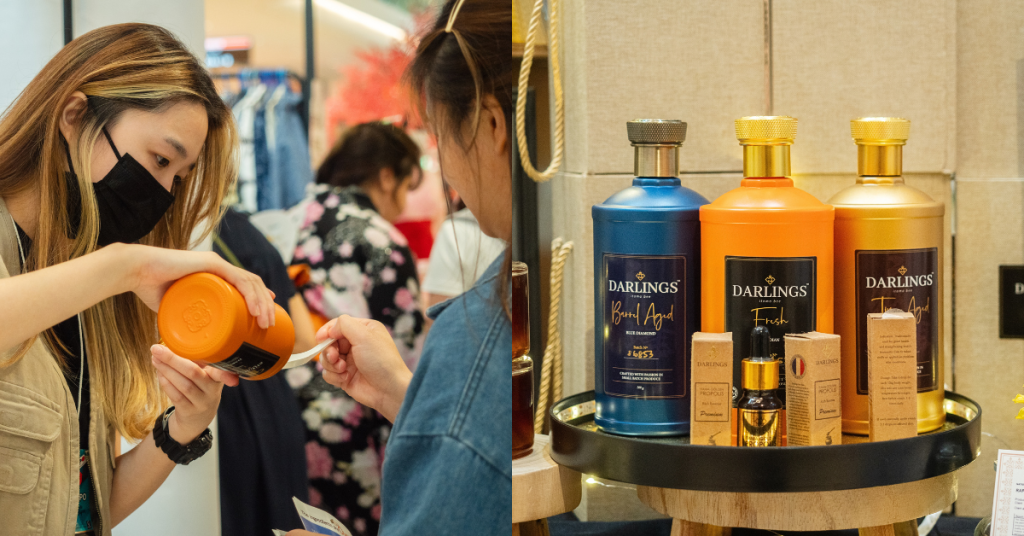
There are three variations of honey available:
- Obsidian Fresh (RM199), which is the brand’s fresh honey
- Alexandrite Time Aged (RM249), a darker coloured honey that’s aged at a very specific temperature to activate and maintain the healthy enzymes
- Blue Diamond Barrel Aged (RM299), which is aged in French Oak Wood virgin barrels for up to a year to activate even more enzymes
Besides that, Darlings Honey offers a Satchel Series where their Obsidian Fresh honey is packaged in small pouches. They’re sold in boxes of 15 pieces (RM129) and 30 pieces (RM239). The convenient packaging is meant to allow customers to carry them wherever they go, so this would be an easy solution if you’re looking to replace sugar.
There’s also a Health Series featuring stingless bee propolis essence serum that’s sold in two bottled variations: 5ml for RM88 and 10ml for RM138.
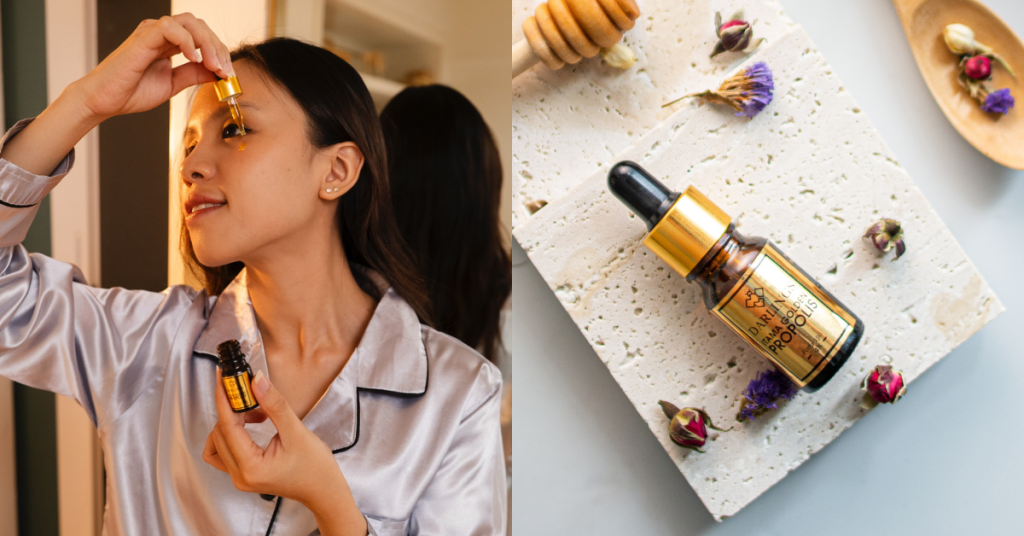
To grow global awareness for kelulut honey
Currently all of their products can be bought either online through their website or at partnering stores. This includes over 30 pharmacies and retail outlets across the Klang Valley.
Occasionally, you might even find them in flea markets, pop-up events, or even food fairs and trade shows. Customers in Singapore and Thailand can get their hands on Darlings Honey items from local distributors like Ittha Boutique Cafe.
Beyond Asia, Danielle and Lewin shared that they’re planning to introduce the brand to European markets as well. “They’re big consumers of honey and don’t have ready access to stingless bee honey, which isn’t commonly found in Europe.”
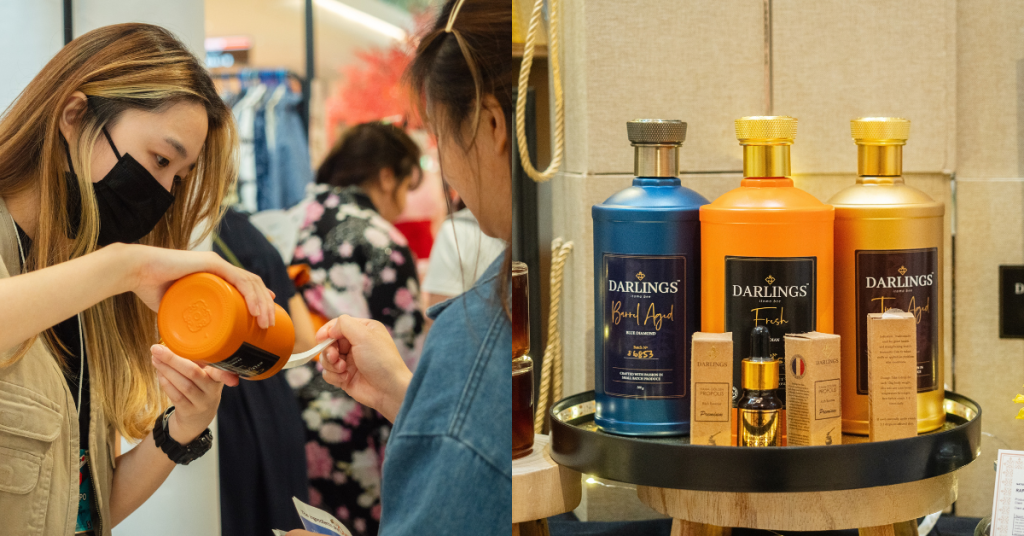
But even closer to home, their goal is to create more awareness for kelulut honey. The trend in superfoods has seriously picked up in recent years with a rise in demand for kombucha. So they want to familiarise Malaysians with their own superfood too.
Convincing consumers shouldn’t be too challenging as honey has already made a name for itself through its health properties. Becoming a global brand in such a competitive market, though, won’t be as easy.
However, the sisters are optimistic about their prospects, especially since they’re both experienced in the business field. When those come to fruition, the sisters said, “Then we’ll know we’ve made it.”
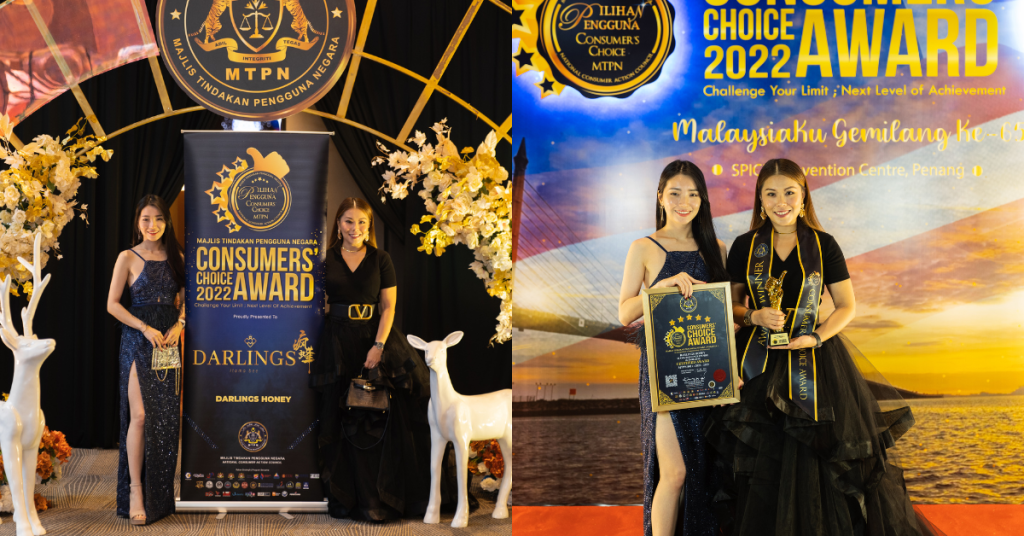
- Learn more about Darlings Honey here.
- Read other articles we’ve written about Malaysian startups here.
Also Read: How financial institutions & universities are reshaping their network through AI-native solutions
Featured Image Credit: Darlings Honey


